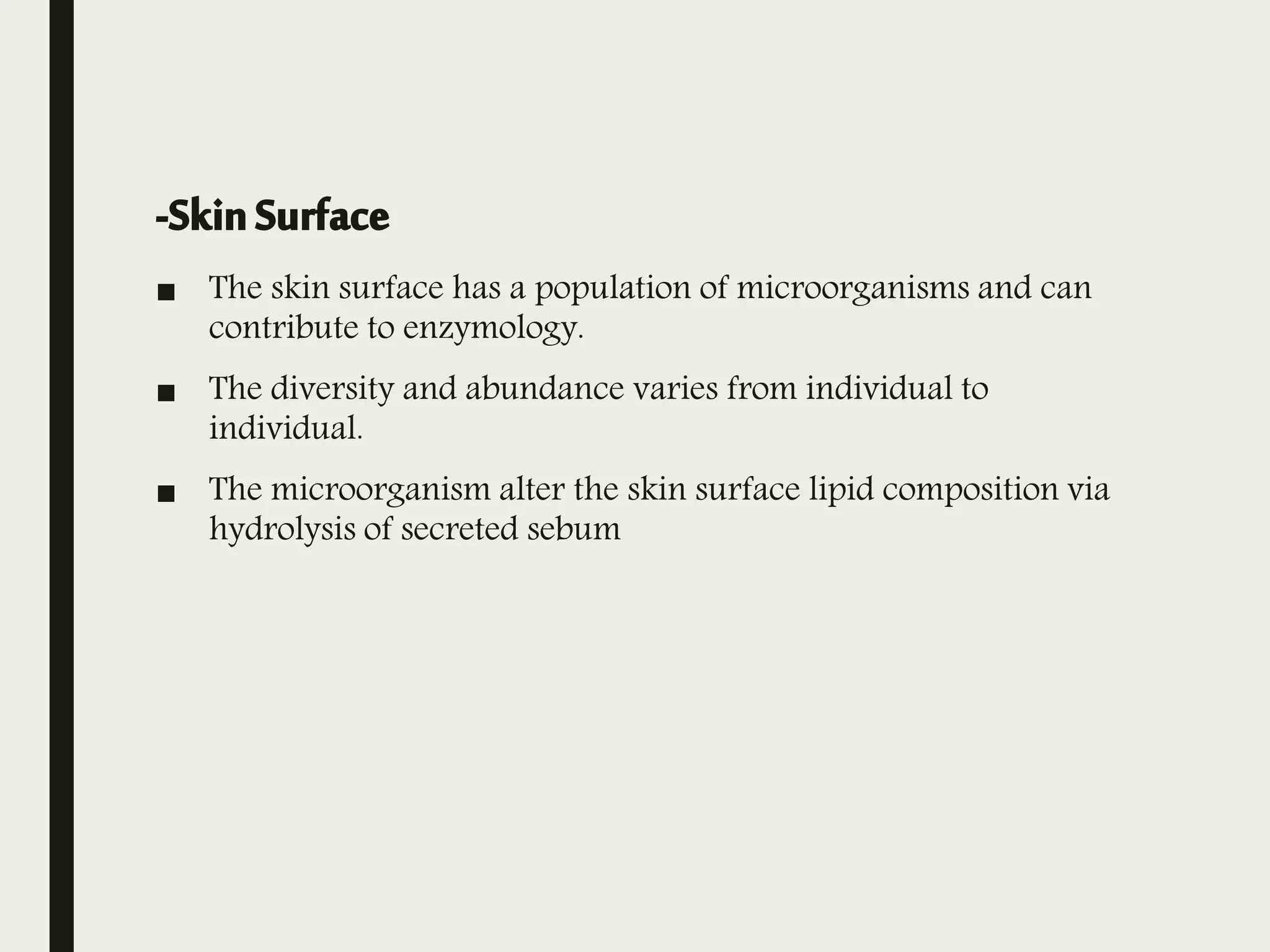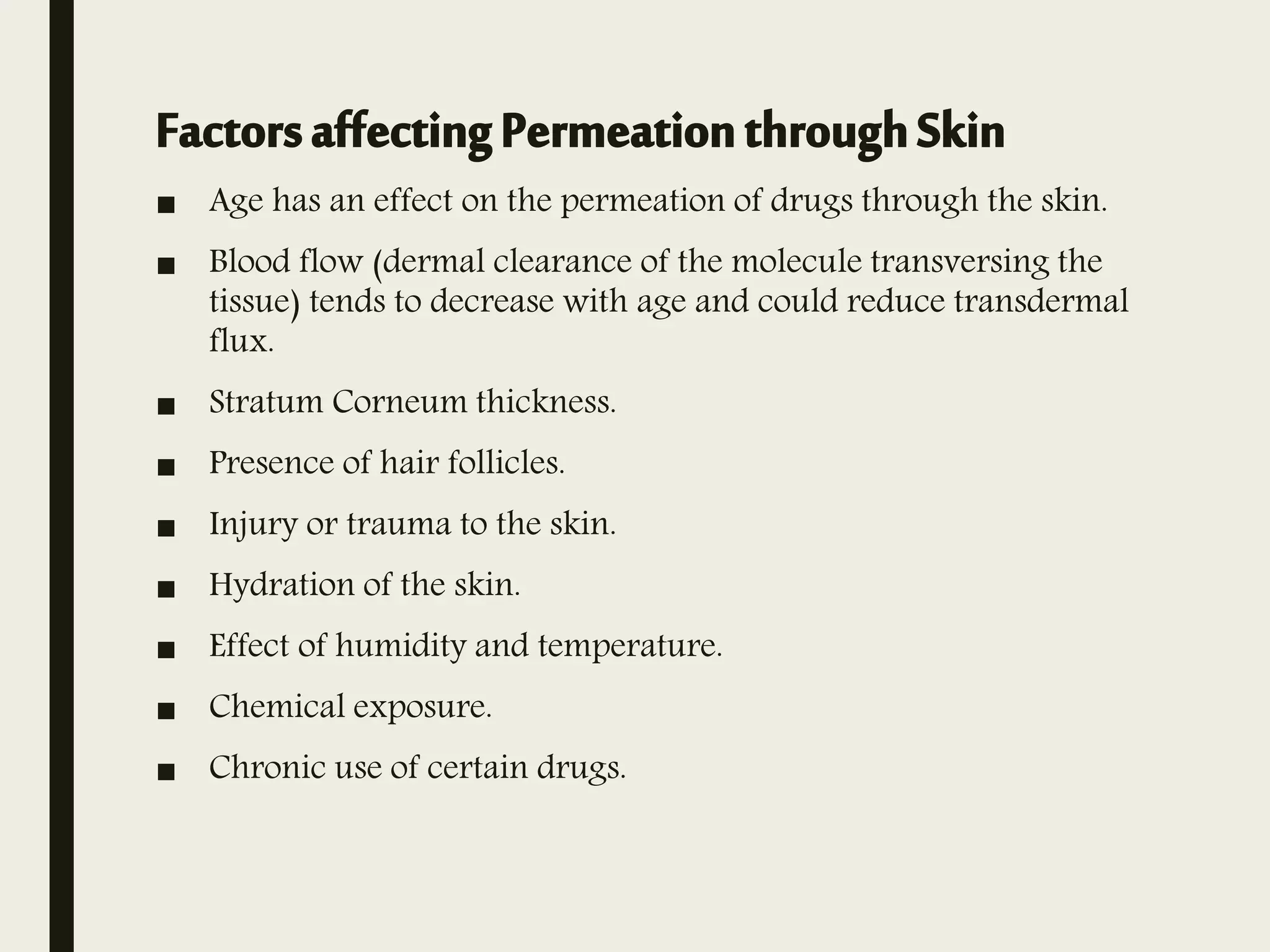The document provides information on transdermal therapeutic systems (TTS). It discusses the advantages and disadvantages of TTS, the structure of skin, permeation through skin, and factors affecting permeation. It also describes the basic components of TTS including polymer matrix, drug, permeation enhancers, and other excipients. Finally, it outlines various formulation approaches used in developing TTS such as membrane permeation controlled systems, adhesive dispersions, matrix diffusion controlled systems, and microreservoir or microsealed dissolution controlled systems.





































































